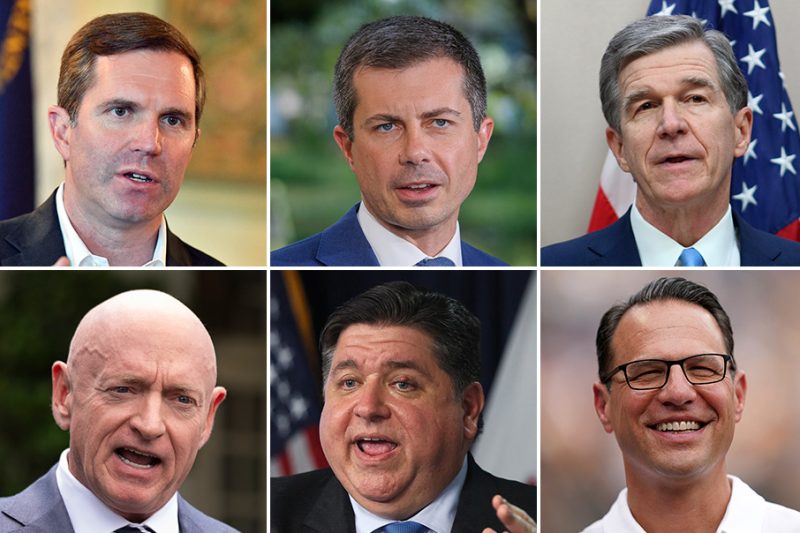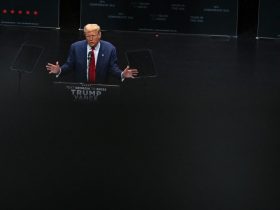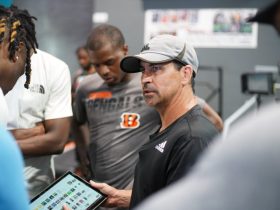As soon as it became clear that Vice President Harris was going to emerge as the likely Democratic presidential nominee, a certain knowing joke emerged almost simultaneously on social media: images of various “whites” — white wines, white paint chips, white crackers — with captions implying that these were Harris’s vice-presidential choices.
“Kamala’s VP options,” posted one user on X, above an array of cream-colored paint samples labeled “Trustworthy Whites: 40 of our best whites.” “Kamala looking for a VP,” wrote another, above a photo of bottles of supermarket white wines labeled with an “Interesting Whites” sign. “Kamala’s menu of potential VPs,” posted a third, above a menu featuring descriptions ranging from “light crisp dry whites” to “rich whites.”
Even “The Daily Show” got in on the gag, repurposing the photo of Harris receiving the 2020 call from then-candidate Joe Biden that he had chosen her as his No. 2, with the caption: “Hello, is this the Midwest White Guy Emporium?”
If the tone was wry, it also reflected the near-instantaneous assessment that hardened among lawmakers in Washington, strategists and operatives throughout the country, as well as ordinary voters: that Harris, who is Black and Indian American and if elected would make history as the first female president, must choose someone White as her running mate — and preferably a White guy.
It remains unclear who Harris will ultimately alight on as her No. 2. Though the list of would-be contenders is heavy with White men — Gov. Roy Cooper of North Carolina, Sen. Mark Kelly of Arizona and Gov. Josh Shapiro of Pennsylvania, to name a few — a few more diverse options, such as Govs. Wes Moore of Maryland and Gretchen Whitmer of Michigan, have also appeared.
But the degree and speed with which the conventional wisdom took hold — that if she wants to win, Harris must choose a White man as her vice president — reflects, at its most cynical, that the nation will tolerate only so much deviation from its White male founding, even as the overall political world is more diverse than ever.
“It is not surprising that the conventional wisdom would be we’ll put a woman at the top of the ticket, but there has to be — and I’m putting it in quotes here — ‘balance,’ which is always part of the equation,” said Debbie Walsh, director of the Center for American Women and Politics at Rutgers University.
When it comes to a barrier-breaking selection, however, Walsh added that a sense of continuity with the past often becomes more important.
“For decades, no one worried that there were two men at the top of the ticket. For decades, no one worried that the two people at the top of the ticket were White,” she said. “But in these moments when you’re looking at a first, I think it is the conventional wisdom to reassure people, to have them think maybe the world isn’t changing quite as fast, to at least see that kind of gender and race — again, in quotes — ‘balance.’”
In interviews at Harris’s first major campaign rally Tuesday near Milwaukee, many of her supporters said they expected her to pick a White man as her running mate — reasoning that would give the ticket the broadest appeal.
Betsy Rowbottom, 53, an interior designer from Milwaukee, said she would love to see Sen. Cory Booker (D-N.J.),who is Black, or Transportation Secretary Pete Buttigieg, who is gay, as her vice president, but she doesn’t think either has a shot.
“I think it’s going to be a straight White man from a swing state. I think that’s the balanced ticket, if you will. I think that it’s something that people will want,” Rowbottom said.
Colette Frederick, a 56-year-old registered nurse from Milwaukee, predicted that Harris would choose Shapiro — a choice that she would be happy with. She believes Harris will have to choose a straight White man.
“I just look at what I see America looks like,” Frederick said. “They’re not going to like this; they’re not going to like that. That’s just my gut. She needs to pick someone that they consider to be acceptable.”
Kimberly Peeler-Allen, co-founder of Higher Heights for America, a group focused on mobilizing and electing Black women, said that because of racism and sexism — both latent and overt — a “White statesman as a validator” can help buoy a historic first as the nominee. She pointed to Barack Obama’s selection of Biden as his running mate in 2008.
“Regardless of the voter’s race — it is both White voters, voters of color — there is something comforting or reassuring about having something that looks familiar to what we’ve had for the last 250 years in our nation’s history of elected leadership,” Peeler-Allen said.
The risk, she added, is that narrowing the candidate pool in that way omits a ton of potential talent.
“It is, of course, unfortunate because that framework would rule out a good number of qualified people of color,” Peeler-Allen said. “I think there is a lot of excitement and interest in a possible all-woman ticket, but there is also the possibility that that would be unnerving to some, because we’ve never had a woman president, let alone a woman president and vice president at the same time.”
Indeed, most unofficial lists of whom Harris should pick include few non-White men. There have even been whispers in some corners that Shapiro — one of the would-be running mates who many Republicans say they privately most fear — might not be an ideal choice because of his adamant support of Israel in the Gaza conflict, or that being gay could disqualify Buttigieg, who ran for president himself in 2020 and is widely considered one of his party’s best communicators.
The Atlantic magazine cheekily dubbed this period “Kamala Harris’s White-Boy Summer,” offering readers a primer on potential No. 2’s like Democratic Govs. Andy Beshear of Kentucky, J.B. Pritzker of Illinois, and Tim Walz of Minnesota.
Alex Castellanos, a Republican media consultant and co-founder of Purple Strategies, said Harris needs to broaden her appeal, and choosing someone different from herself as her running mate helps her do that.
“If Kamala picked someone like her — another woman — the message it’s sending is that this campaign is only about this, and that’s too narrow,” he said. “She’s running for president for all of America, not just the women of America.”
He added that her campaign should not be “a DEI commercial,” using an acronym for diversity, equity and inclusion, and noted that “I do think a little toxic masculinity would help her.”
“She’s defined a great deal by women’s issues and Black issues, and that’s great, but is she more than that?” Castellanos said. “How does she make the case that she’s more? By broadening the appeal of her ticket, by adding a male, by adding centrist moderate Democratic credentials, like maybe a Mark Kelly or Josh Shapiro.”
For some, the notion that Harris needs to choose a White male is a practical reality for a party that wants to appeal to a broad swath of voters and have its ticket reflect the entirety of the nation.
Jennifer Palmieri, the communications director on Hillary Clinton’s 2016 presidential campaign, pointed to Biden’s pledge that he would choose a woman as his running mate, as well as his pledge during the same period to appoint a Black woman to the Supreme Court.
“I think that it would bother me more if the calculus had been that Biden also could have picked a White guy, but you need to have balance these days,” Palmieri said. “I have been pleasantly surprised that a lot of male political professionals in the Democratic Party have said they think two women on the ticket would be powerful.”
She concluded: “I actually don’t feel a lack of progress there. If it’s a guy at the top of the ticket, it has to be a woman, and if there’s a woman at the top of the ticket, it has to be a guy.”
Wells reported from West Allis, Wis.








